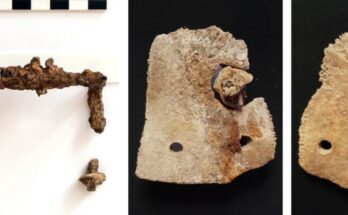
Two scientists have won the Nobel Prize in Physiology or Medicine for their work on microRNA, which is heavily involved in cell function.
Victor Ambros, a researcher at the University of Massachusetts Chan Medical School, and Gary Ruvkun, a molecular biologist at the University of Massachusetts Hospital and a professor at Harvard University Medical School, were awarded the Nobel Prize in Medicine after discovering microRNA and how its functions explain how cells develop into specialized functions despite having the same genetic coding.
According to the panel that awarded the Nobel Prize in Medicine to the scientists, Ambros and Ruvkun’s work is “proving to be fundamentally important for how organisms develop and function.”
Ambros and Ruvkun will split the 11 million Swedish kroner (about US$1.62 million) award. Ruvkun told Reuters he was happy to share the prize with “a great friend” and that Ambros is “a wonderful guy.”
MicroRNA and its significance in cell development
Ambros and Ruvkun’s Nobel Prize in Medicine work with microRNA could help scientists treat diseases like cancer or epilepsy, as the discovery concerns how cells develop.
Every cell in the human body carries the same genetic information and instructions. However, the scientists’ work with microRNA explains how cells can serve specific functions, produce different proteins, and shut on and off depending on what’s needed, regardless of having the same genes and instructions.
Olle Kämpe, vice-chair of the Nobel Committee for Physiology or Medicine, said, “The seminal discovery of microRNA has introduced a new and unexpected mechanism of gene regulation. MicroRNAs are important for our understanding of embryological development, normal cell physiology, and diseases such as cancer.”
Messenger RNA (mRNA) sends messages of coding from DNA from protein to protein, instructing them on how to function. While mRNA works with DNA, microRNA works with mRNA. MicroRNA makes sure the correct coding is transcribed from to the mRNA according to what the body needs to do.
Ambros and Ruvkun discovered that a tiny strand of RNA covers the coding on the mRNA that is not needed, so when the proteins are read, they execute the exact need required.
“For a long time, however, microRNA was believed to be an oddity, peculiar to C.elegans,” said Kämpe. A C.elegan is a unique type of roundworm that was first discovered to have the process Ambros and Ruvkun discovered with microRNA. As scientists have looked further into it, they have also discovered that microRNA has the ability to break down mRNA, too.
Thomas Perlmann, secretary general of the Nobel Assembly, said he woke Ruvkun up with a phone call announcing his shared Nobel Prize in Medicine with Ambros.
“His wife answered, and it took a long time before he came to the phone and sounded very tired, but he quite rapidly was quite excited and happy when he understood what it was all about,” said Perlmann.



